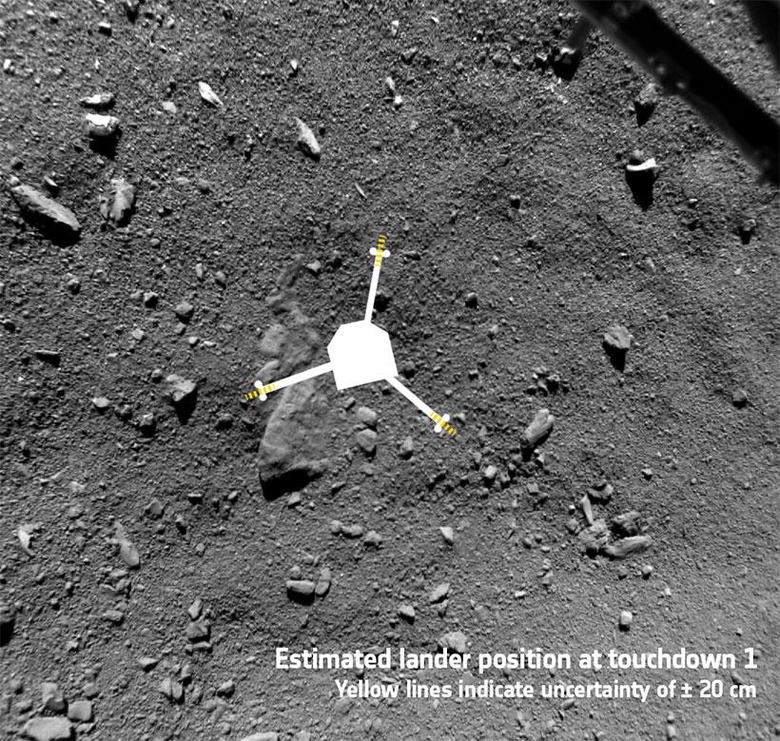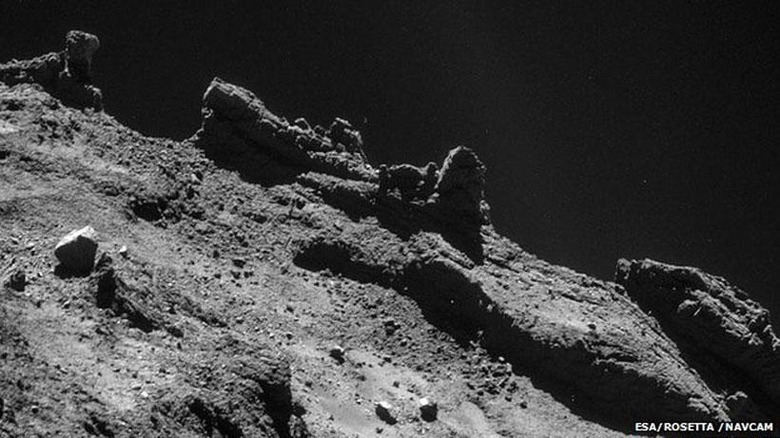We've Given Up On Comet-Hopping Philae
It was one of the most ambitious space exploration missions ever: send a probe more than 300 million miles across the solar system to land on a moving comet. That Rosetta, and the Philae lander the spaceship carried, ever made it to Comet 67P/Churyumov–Gerasimenko was halfway to a miracle, but now the European Space Agency is calling time on ever hearing from the plucky probe again.
You can't accuse mission control of not giving Philae time to pipe up. The lander went silent seven months ago, ceasing communications with Rosetta which is in orbit around the comet, relaying messages back to Earth.
Rosetta itself hasn't been idle in the meantime, mind. The spacecraft has been running its own scientific experiments, breaking off from that occasionally so as to adjust its trajectory so as to pass through the zone where it's most likely to hear Philae.
Now, though, the ESA team is giving up on trying to reach out to the probe.

"The chances for Philae to contact our team at our lander control centre are unfortunately getting close to zero," Stephan Ulamec, Philae project manager at the German Aerospace Center, DLR said today. "We are not sending commands any more and it would be very surprising if we were to receive a signal again."
Philae's journey didn't go entirely to plan, though it was a less-than-perfect landing which led to the mission going south. The probe was meant to use a harpoon system to spear the comet and then winch itself down, given that the lackluster gravity would be insufficient alone.
However, the harpoons failed to fire and the thruster which the ESA expected Philae to use to force itself down onto the surface did not fire. Instead, the lander bounced on its first impact, began to spin, and subsequently tumble after what's believed to be a strike on a rock outcropping or other prominence.
Although the rebound wasn't sufficient for Philae to escape Comet 67P's mild gravity, it did leave the probe to land in an area of rough terrain and in shadow, a little more than half a mile away from the original target. That significantly affected the amount of sunlight its solar panels could receive, curtailing many of its primary mission goals because there simply wasn't the power to run them.

Instead, Philae used the remnants of its landing power packs to do some reworked experiments, before going to sleep at the end of 2014.
For a while it seemed the mission was over, at least for the probe, but a surprise signal in June last year revealed Philae was still alive. Conditions hadn't improved, however, and it was effectively an opportunity for a final blast of data before the last of the juice was exhausted.
Though it may not have been the mission many expected or hoped for, it wasn't a waste. The ESA now says that, despite the problems, around 80-percent of the original scientific activities were completed after technicians reworked the plans.
Among the discoveries are unexpected organic compounds, themselves precursors to the amino acids required for life, and key differences in the water on the comet and that found on Earth.
It won't be our last trip to a comet, either. Japan launched its own HAYABUSA 2 mission back in December 2014, the start of a six year trip to Asteroid 1999 JU3 where it aims to mine samples of rock to send back home.
MORE ESA
